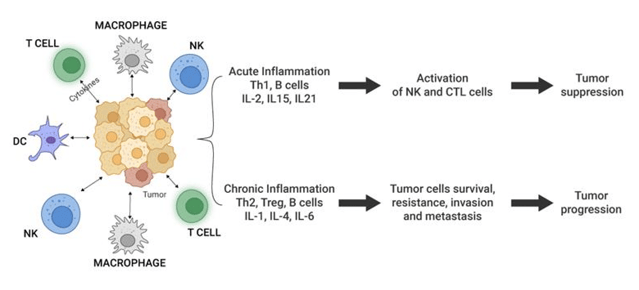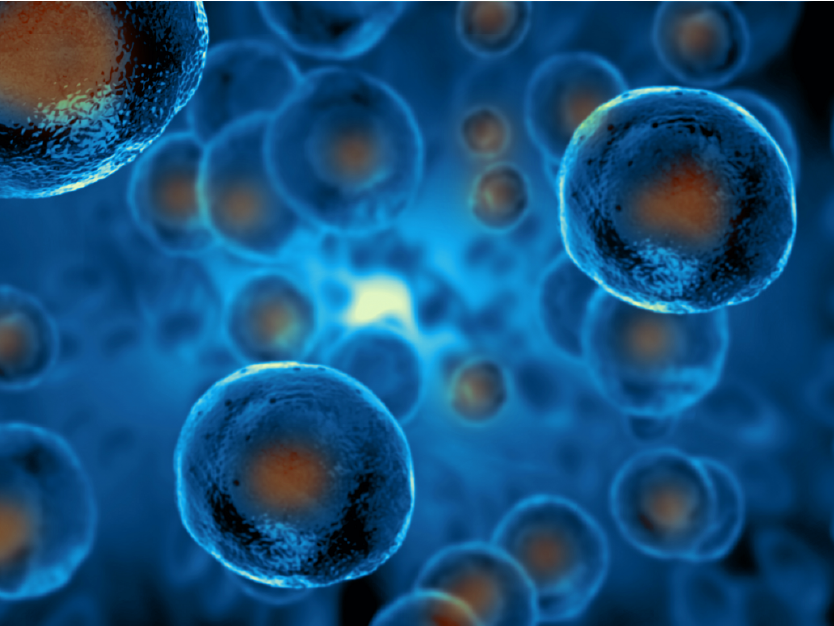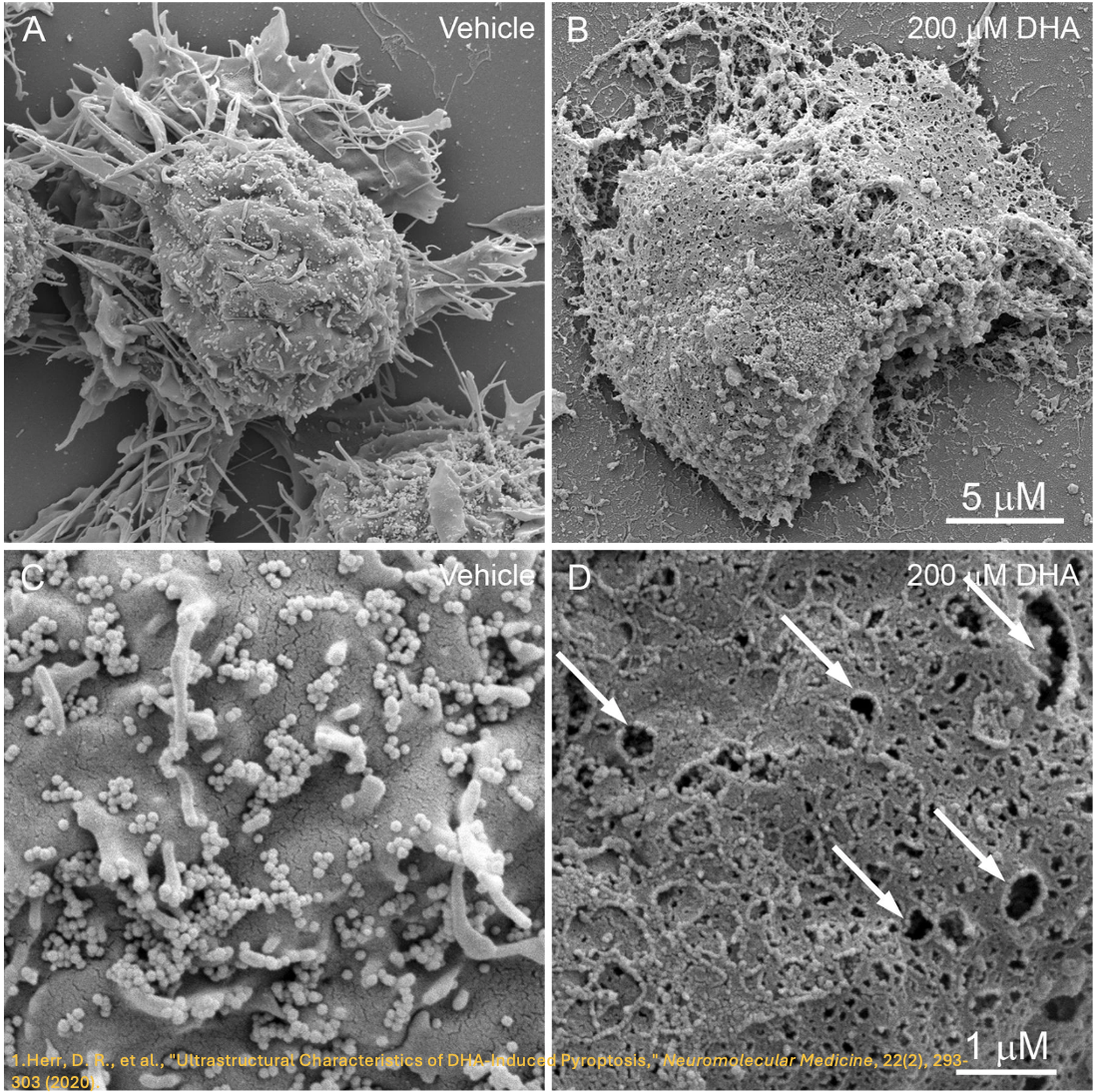Interleukins are a group of small signaling molecules, and a type of cytokine. They play a vital role in the body’s immune response by activating and deactivating immune cells. Recently, interleukins have gained visibility as a target to help treat COVID-19, and the WHO has recommended giving IL-6 inhibitors to patients with severe cases. Additionally, because of its widespread impact on the body, the interleukin family has gained popularity as drug targets over the last few years.

Introduction to Interleukins
The name interleukin is composed of two parts. The first part “inter” is defined as a means of communication between things, and “leukin” is derived from the word leukocytes. Originally, it was though that these molecules were produced by and act on leukocytes. Leukocytes, also known as white blood cells, are an important part of the immune response. Though, since their discovery, it has been shown that interleukins are produced by other cell types as well. Nevertheless, their name still serves as an important reminder of their main function: signaling in the immune response.
Humans have over 50 different interleukins. Although they vary heavily in structure, they tend to overlap in function. Most often, interleukins are involved in the differentiation and proliferation of T and B lymphocytes. Many interleukins are also key in promoting inflammation.
Inflammatory Interleukins Through the Lens of IL-6
When pro-inflammatory interleukins such as interleukin 6 (IL-6) are over-expressed, they result in excess inflammation in the body. This causes chronic inflammation and autoimmune diseases. At this point in time, there are over 80 autoimmune diseases discovered, affecting more than 24 million people in the United States alone, are a popular target for research. Rheumatoid arthritis, for example, affects 1.5 million people in the United States. People with rheumatoid arthritis can experience such side effects as joint pain, swelling, fatigue and fever, and further complications including cardiovascular disease and lung complications. Another disease that can occur through the over-expression of IL-6 is psoriasis, which affects at least 7 million people in the United States. Psoriasis is a skin disease that causes itchy red patches to appear. Other examples of autoimmune diseases that may benefit from interleukin treatments include celiac disease, type 1 diabetes, and lupus.
Interleukin Therapies on the Market for Autoimmune Diseases
There are currently several approved interleukin therapies that treat autoimmune and inflammatory diseases.
|
Type |
IL Target |
Name |
Disease approved for treatment |
|
Antibody |
IL-1 |
Canakinumab |
Arthritis, gout, CAPS |
|
Antibody |
IL-4R |
Dupilumab |
Dermatitis |
|
Antibody |
IL-6R |
Tocilizumab |
Arthritis, rheumatoid arthritis, CRS, |
|
Sarilumab |
Rheumatoid arthritis, |
||
|
Antibody |
IL-17 |
Secukinumab |
Ankylosing spondylitis, psoriasis, psoriatic arthritis |
|
Ixekizumab |
Psoriasis |
||
|
Antibody |
IL-17R |
Brodalumab |
Psoriasis, psoriatic arthritis |
|
Antibody |
IL-23 |
Tildrakizumab |
Psoriasis |
|
Guselkumab |
Psoriasis, psoriatic arthritis |
||
|
Risankizumab |
Psoriasis |
||
|
Antibody |
IL-12/IL-23 |
Ustekinumab |
Crohn’s disease, psoriasis, psoriatic arthritis |
|
Protein |
IL-1 |
Rilonacept |
CAPS |
|
Protein |
IL-1R |
Anakinra |
Rheumatoid arthritis, arthritis, CAPS |
As you can see, some of these treatments are based off antibody therapy while others are based off protein therapy. Both types of therapy, function to inhibit interleukin signaling. The antibodies and proteins can target either the interleukin protein or the interleukin receptor to block signaling.
Interleukin as a Cancer Target
Interleukins are an interesting cancer target because they can have a promotive or suppressive (or both!) effect on tumors. Many cancer tumors over-express IL-6, which is an example of a tumor progressor, which protects them from therapy-induced DNA damage and apoptosis. This makes these cancer tumors more difficult to treat. However, an IL-6 inhibitor will suppress IL-6 signaling and make the tumors more susceptible to treatment.
Interleukin 2 (Il-2), on the other hand, can act as a tumor suppressor. Therefore, anti-cancer IL-2 therapies can be synthetic versions of IL-2 that up-regulate its signaling in order to enhance the immune response. One example is Aldesleukin, which is used to treat melanoma and renal cancer.
 Source: Setrerrahmane, S., Xu, H. Tumor-related interleukins: old validated targets for new anti-cancer drug development. Mol Cancer 16, 153 (2017). https://doi.org/10.1186/s12943-017-0721-9. Distributed under the terms of the Creative Commons Attribution 4.0 International License: http://creativecommons.org/licenses/by/4.0/
Source: Setrerrahmane, S., Xu, H. Tumor-related interleukins: old validated targets for new anti-cancer drug development. Mol Cancer 16, 153 (2017). https://doi.org/10.1186/s12943-017-0721-9. Distributed under the terms of the Creative Commons Attribution 4.0 International License: http://creativecommons.org/licenses/by/4.0/
Although there aren’t many treatments for cancer involving interleukins on the market, there are several therapies currently in clinical trials.
What ABclonal can do
Since interleukins are an important part of the immune response and inflammation, they may be a viable target for many diseases. Other than the numerous autoimmune diseases and types of cancer that interleukin-based therapies may help treat, there is also great therapeutic potential in targeting COVID-19, cardiovascular disease, and HIV.
ABclonal offers a variety of interleukin antibodies, proteins, and ELISA kits covering many popular research areas. We have currently over 500 interleukin products with multiple applications in our inventory. ABclonal is committed to continued development of additional interleukin products to meet the growing market demand.
References
Autoimmune Diseases. (n.d.). National Institute of Environmental Health Sciences. Retrieved July 27, 2021, from https://www.niehs.nih.gov/health/topics/conditions/autoimmune/index.cfm
Brocker, C., Thompson, D., Matsumoto, A. et al. Evolutionary divergence and functions of the human interleukin (IL) gene family. Hum Genomics 5, 30 (2010). https://doi.org/10.1186/1479-7364-5-1-30.
How Interleukin-2 Helps Treat Autoimmune Disease. (2021, January 11). YouTube. https://www.youtube.com/watch?v=Wmns7EWMVVI
Interleukin inhibitors. (n.d.). Drugs.Com. Retrieved July 27, 2021, from https://www.drugs.com/drug-class/interleukin-inhibitors.html
Kumari, N., Dwarakanath, B.S., Das, A. et al. Role of interleukin-6 in cancer progression and therapeutic resistance. Tumor Biol. 37, 11553–11572 (2016). https://doi.org/10.1007/s13277-016-5098-7
Nicholson, A., & Pool, J. (2016). Psoriasis-Basic Statistics. PlaquePsoriasis.Com. https://plaquepsoriasis.com/what-is-psoriasis/how-common-statistics
Rheumatoid Arthritis: Causes, Symptoms, Treatments. (n.d.). Arthritis Foundation. Retrieved July 27, 2021, from https://www.arthritis.org/diseases/rheumatoid-arthritis#:%7E:text=About%201.5%20million%20people%20in%20the%20United%20States,as%20many%20women%20have%20the%20disease%20as%20men.
Tanaka, T., Narazaki, M., & Kishimoto, T. (2014). IL-6 in inflammation, immunity, and disease. Cold Spring Harbor perspectives in biology, 6(10), a016295. https://doi.org/10.1101/cshperspect.a016295
WHO recommends life-saving interleukin-6 receptor blockers for COVID-19 and urges producers to join efforts to rapidly increase access. (2021, July 6). World Health Organization. https://www.who.int/news/item/06-07-2021-who-recommends-life-saving-interleukin-6-receptor-blockers-for-covid-19-and-urges-producers-to-join-efforts-to-rapidly-increase-access.




